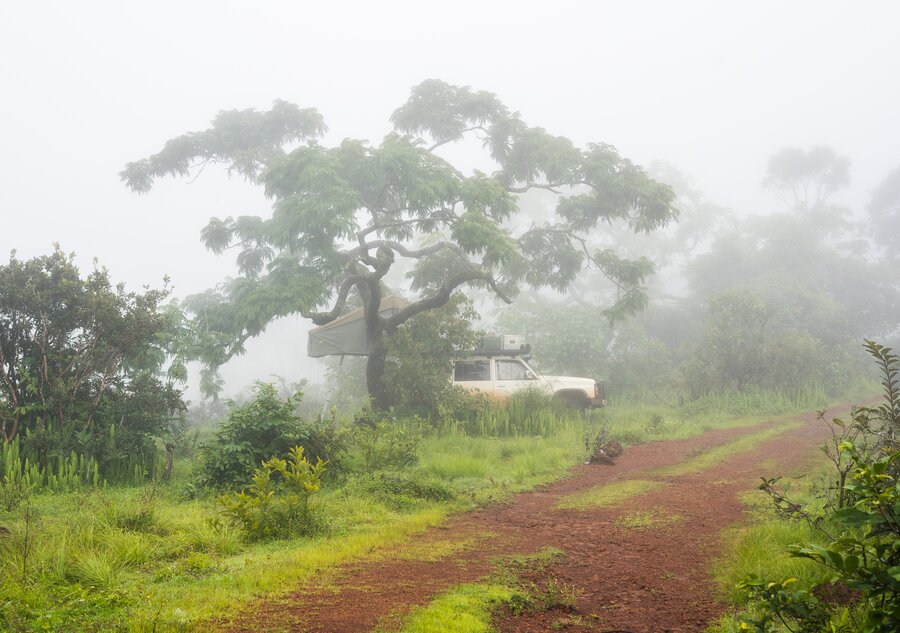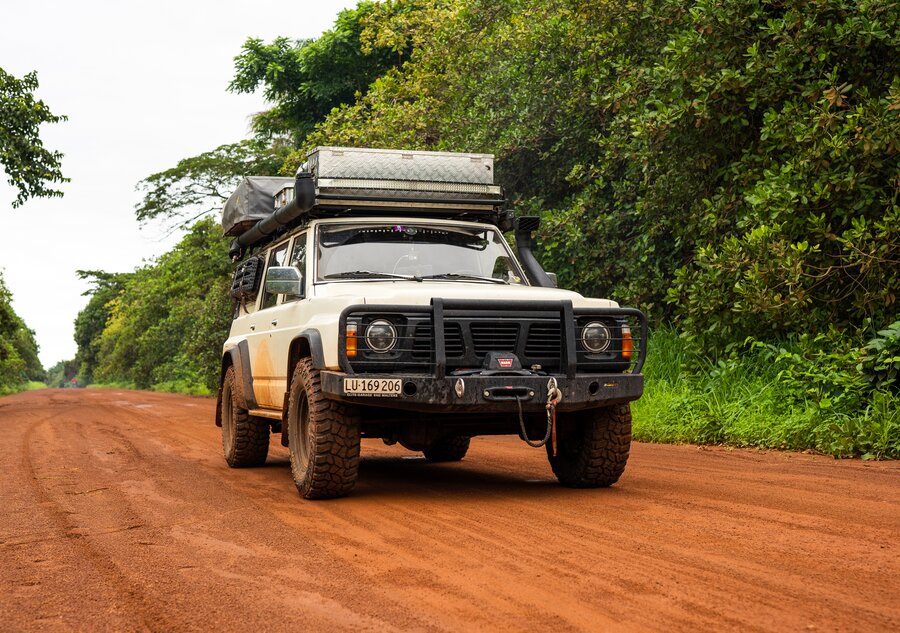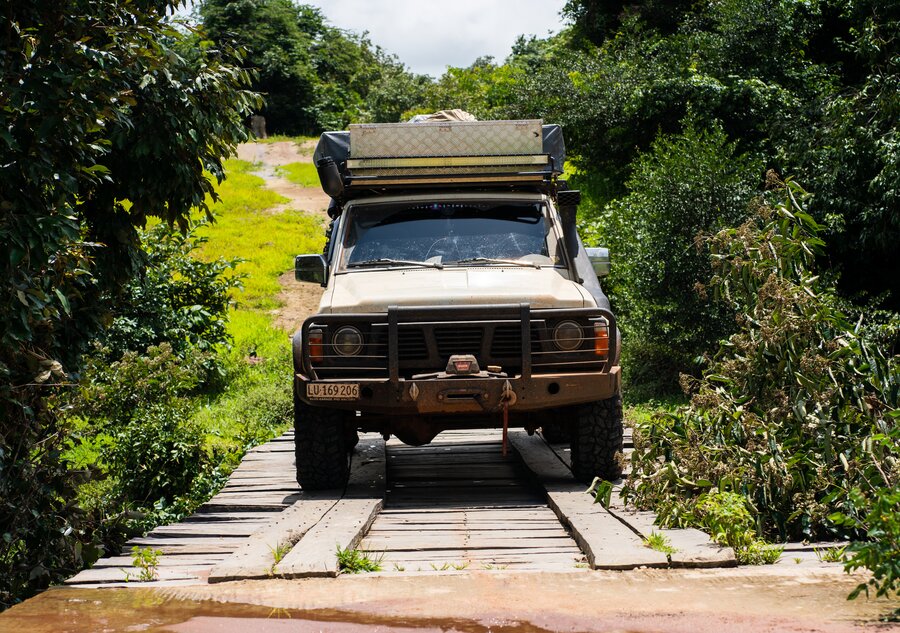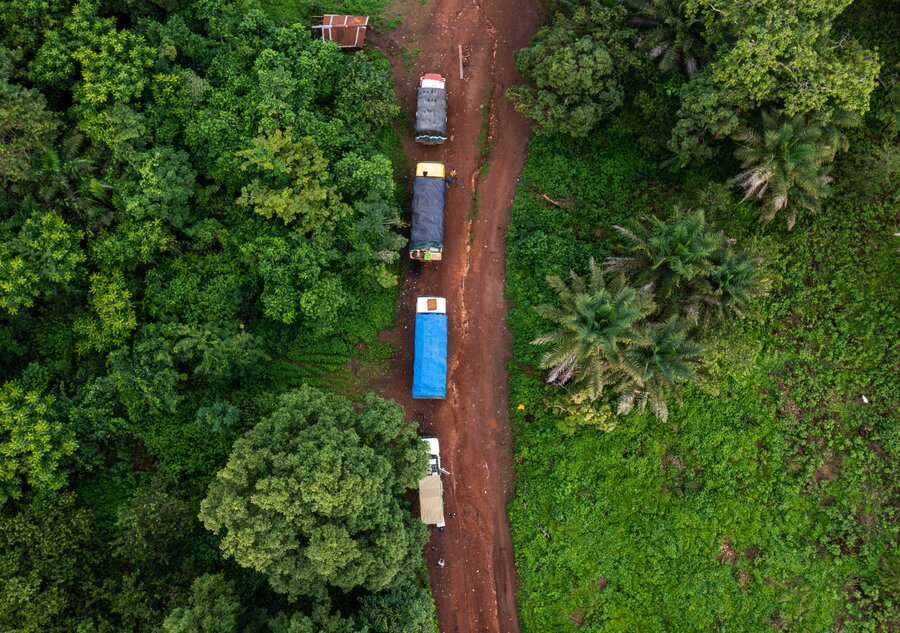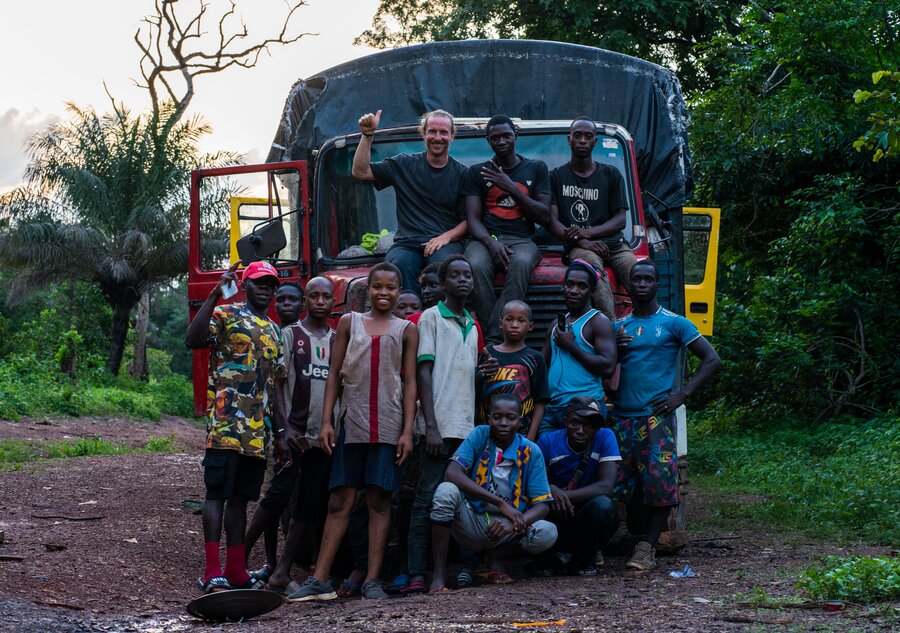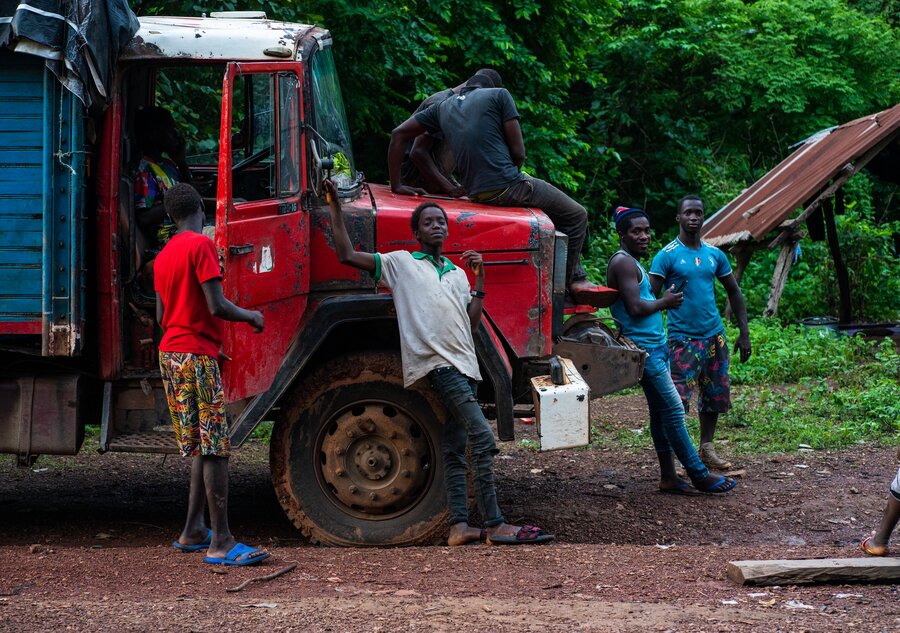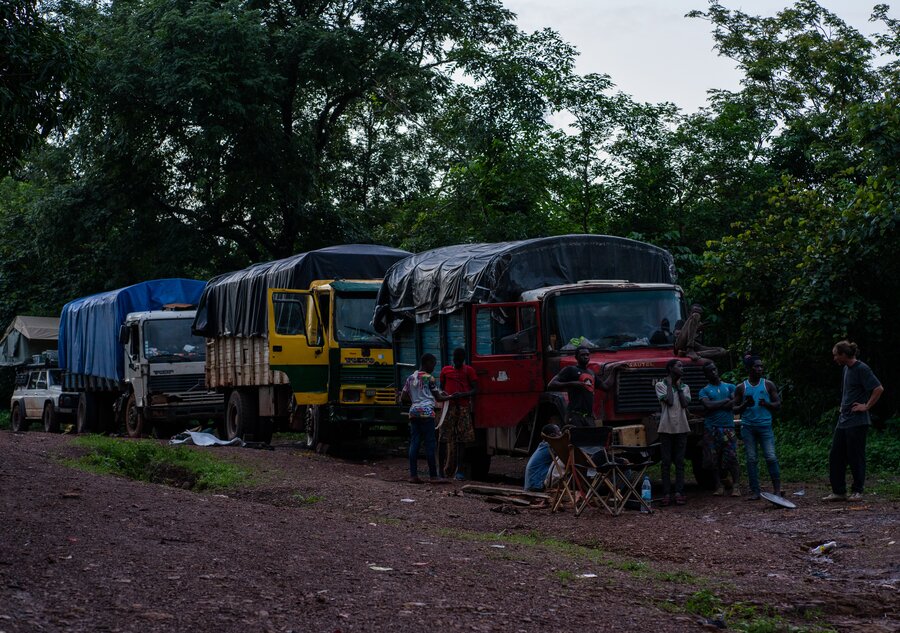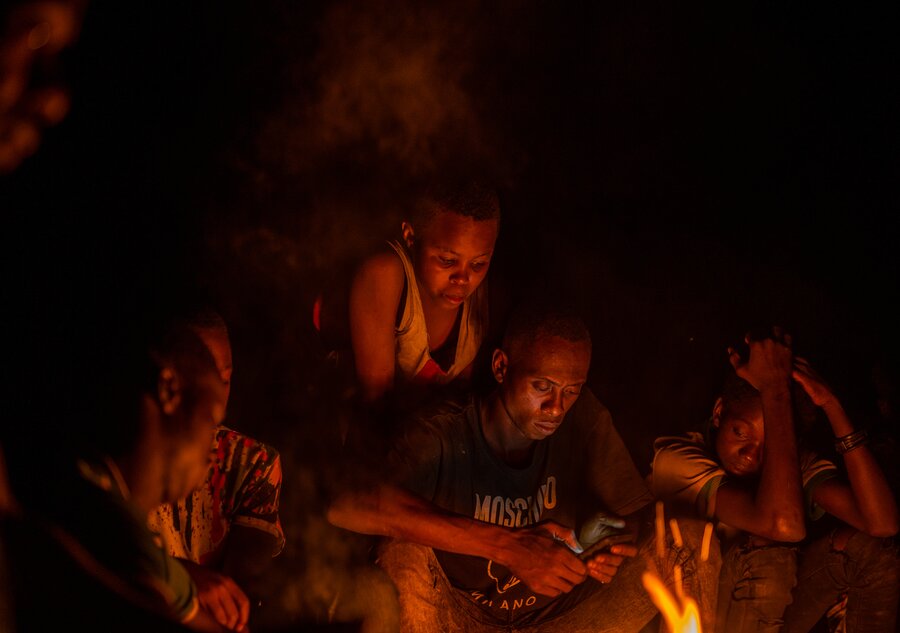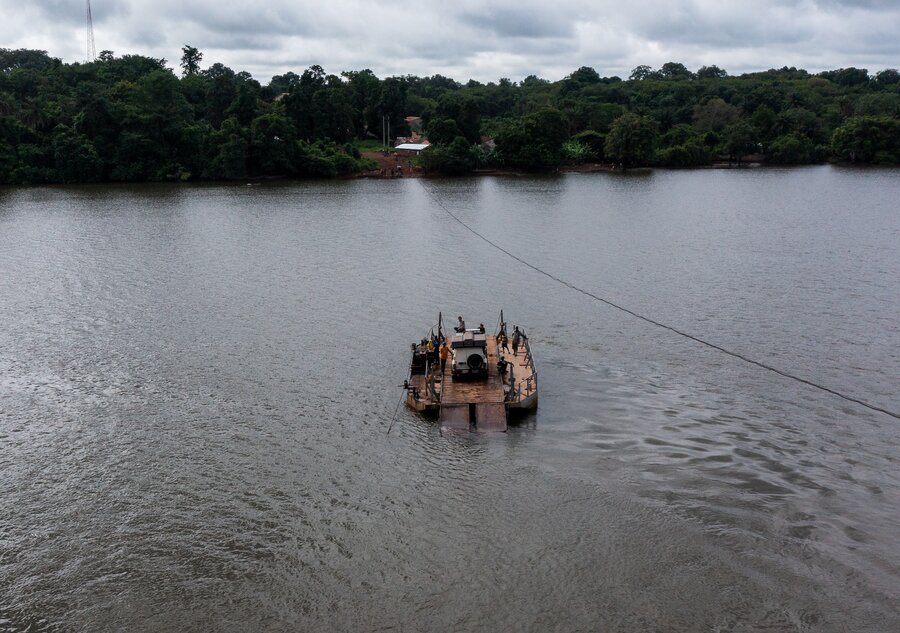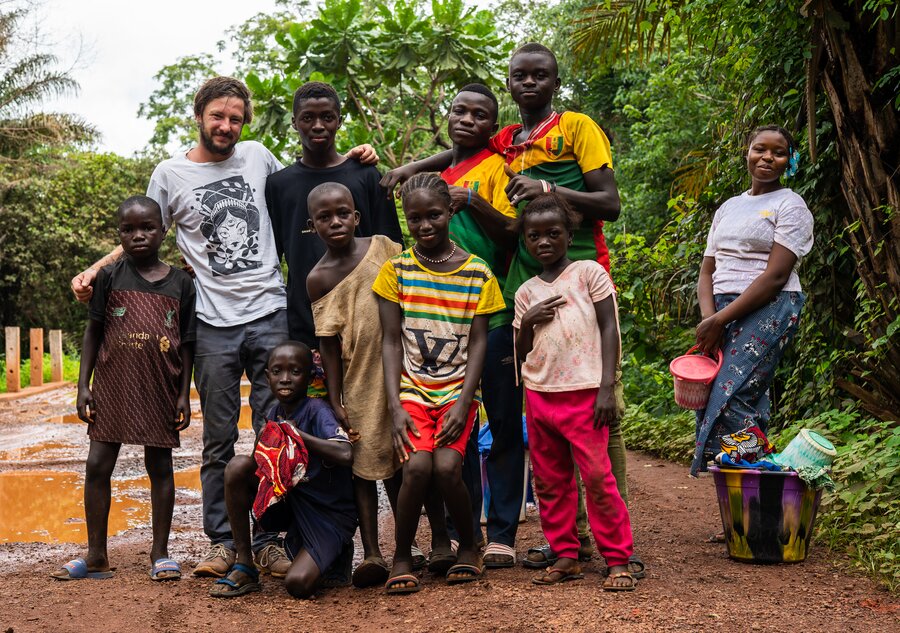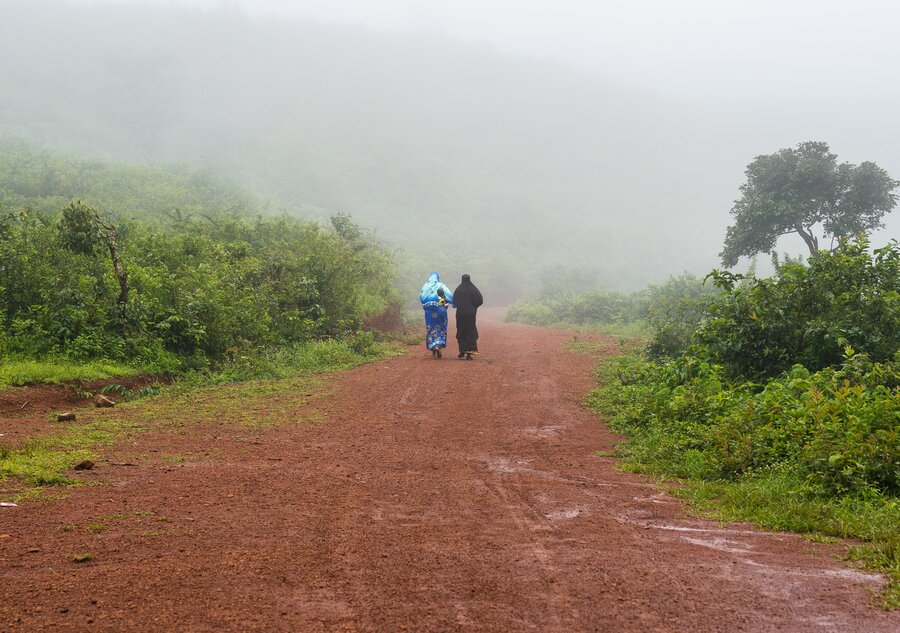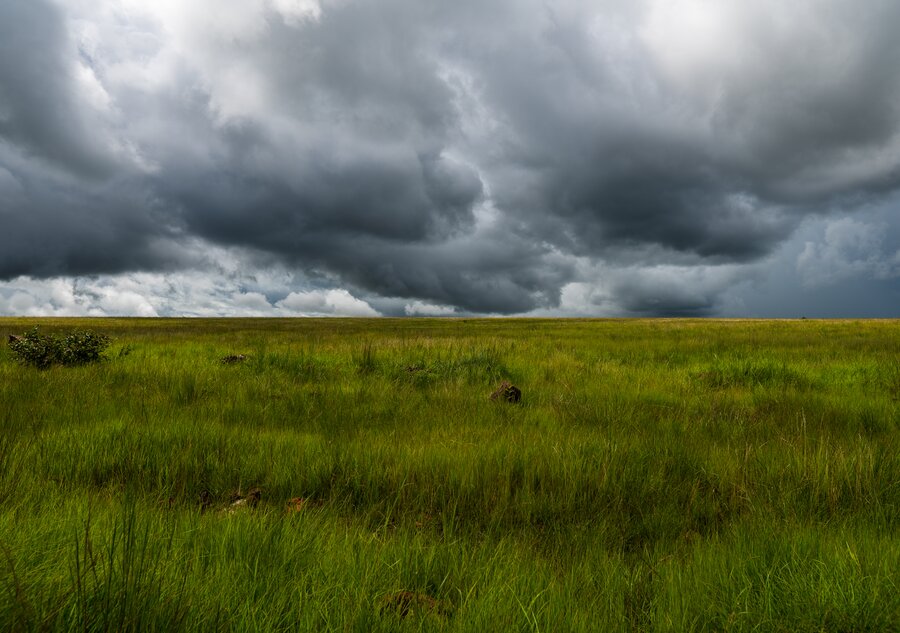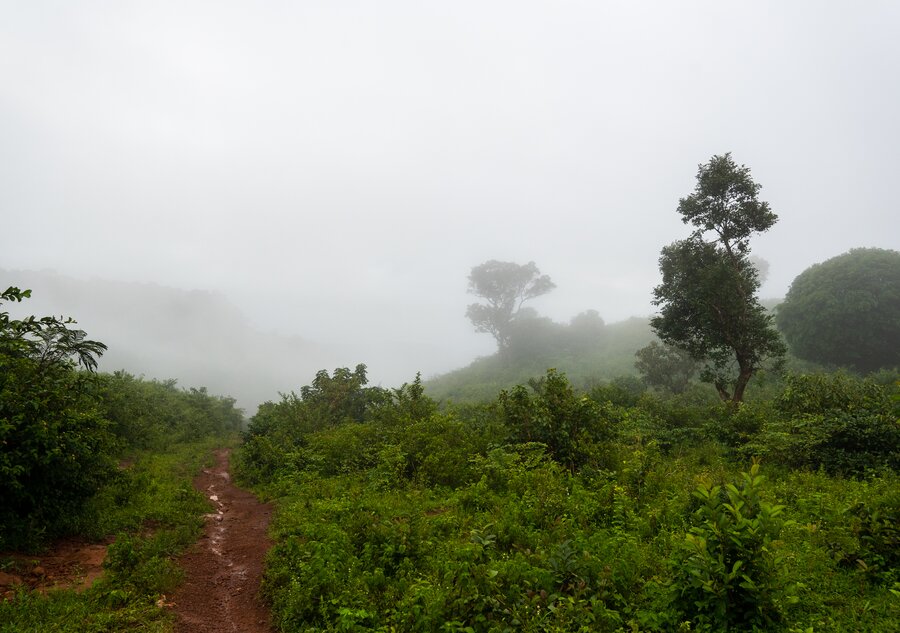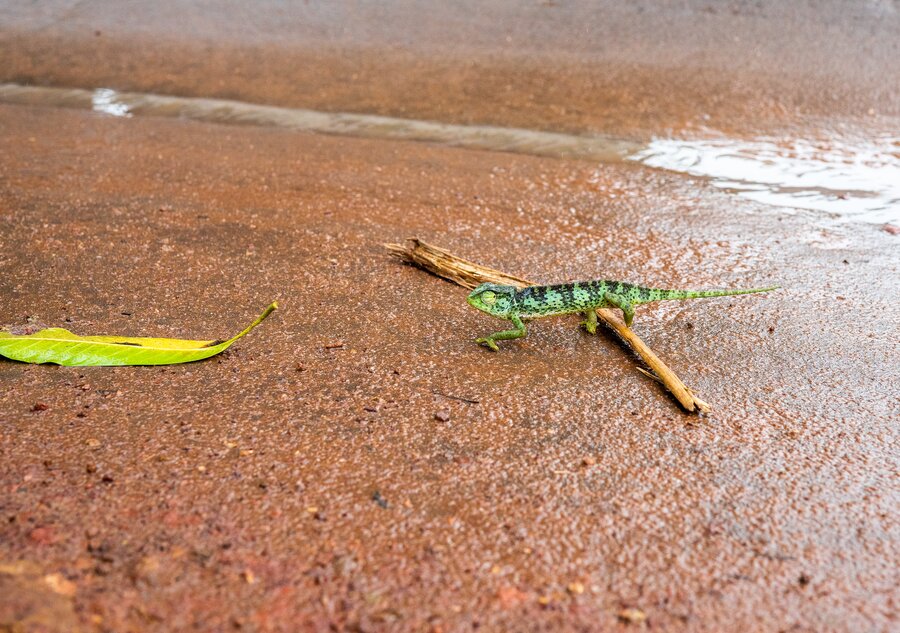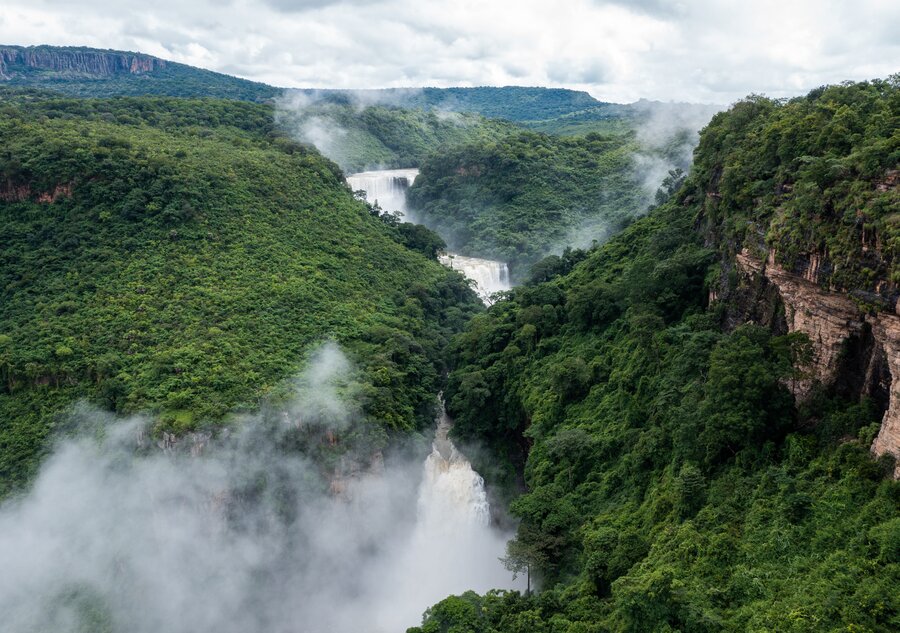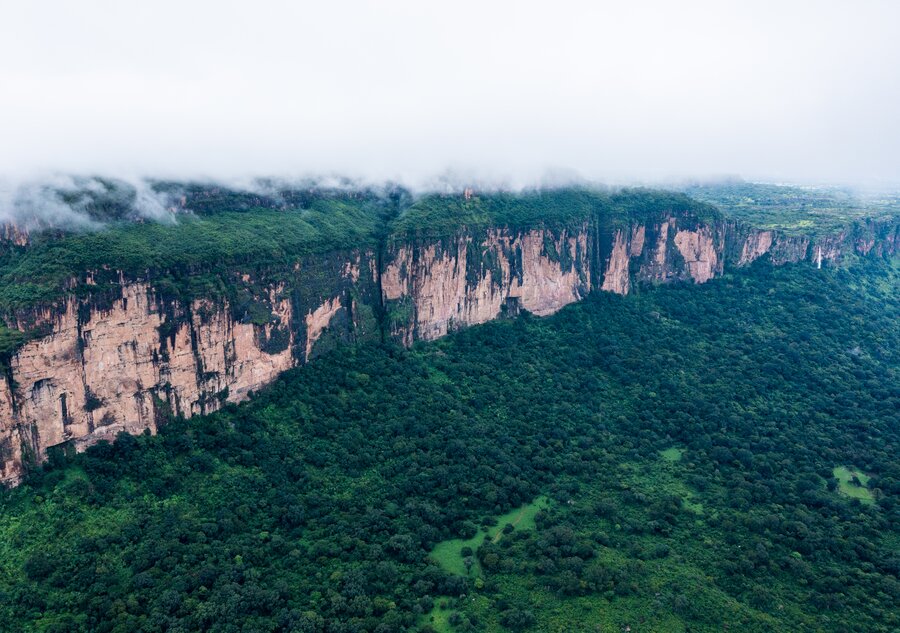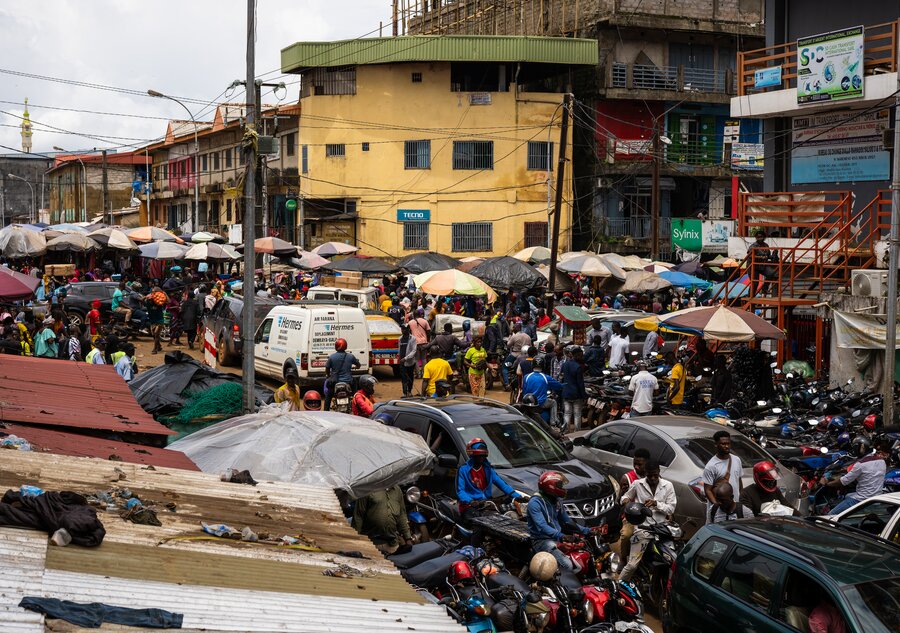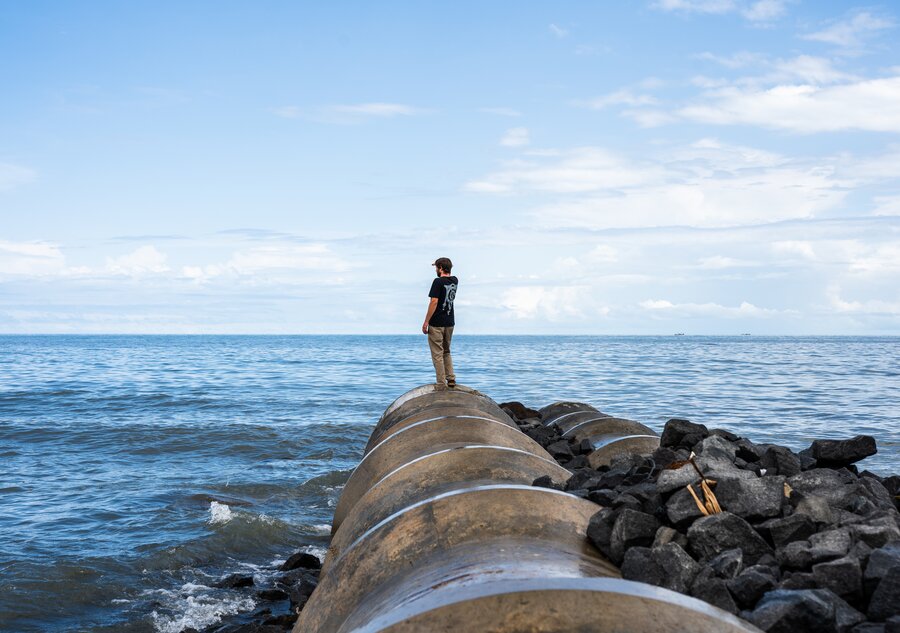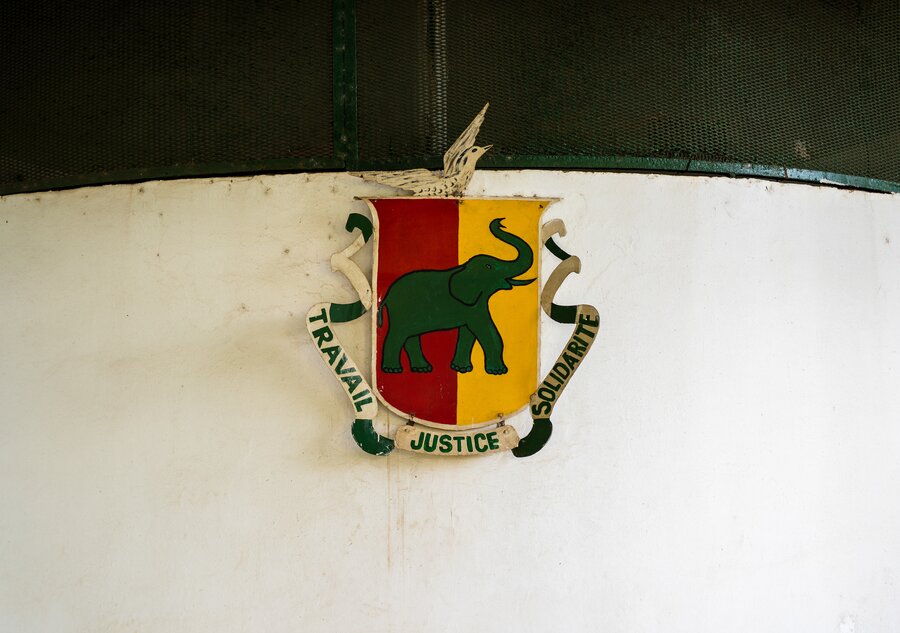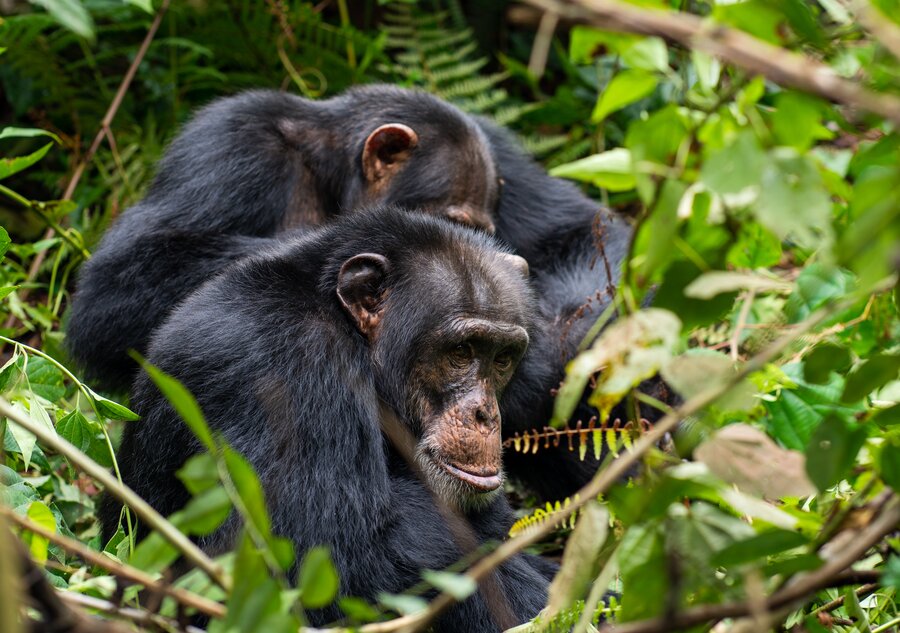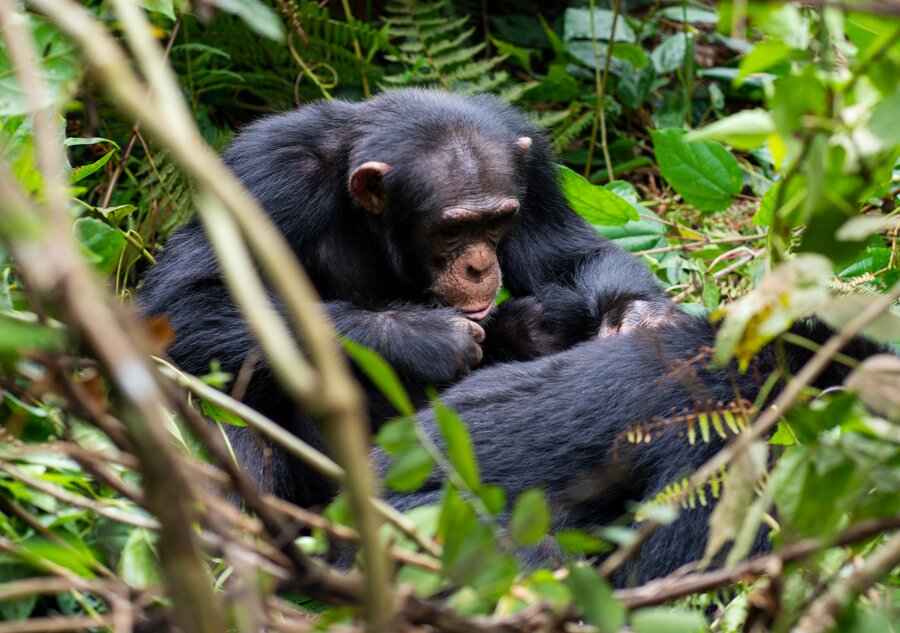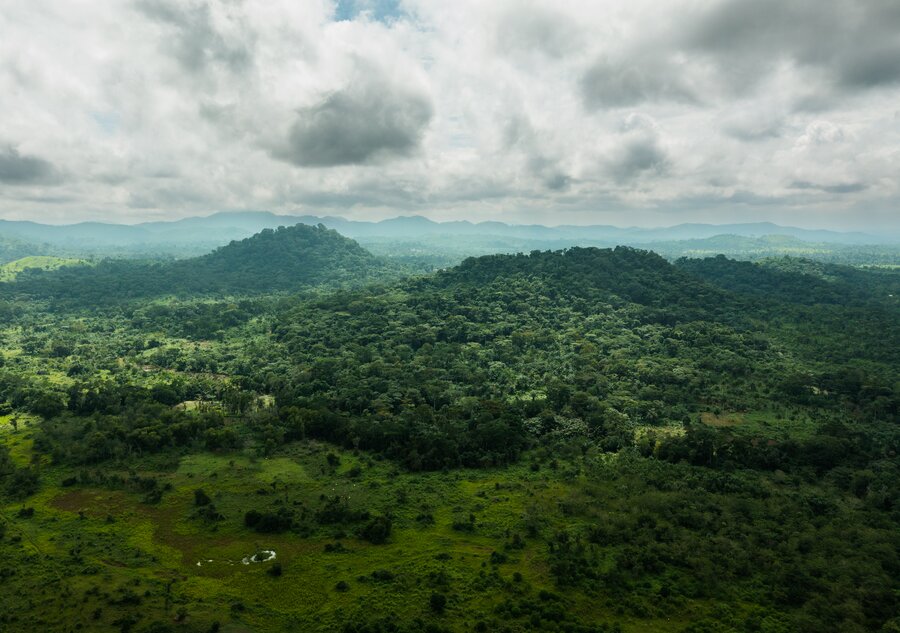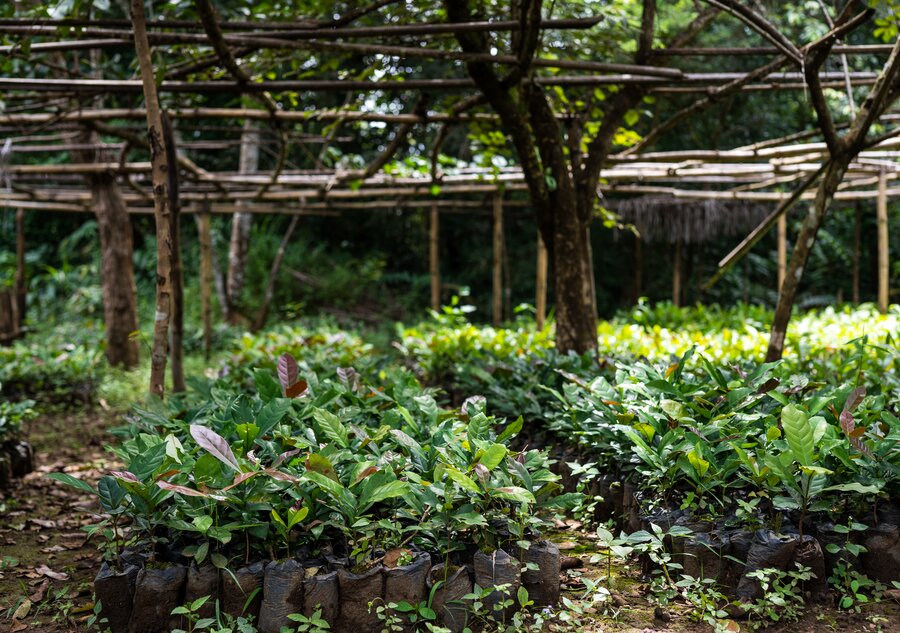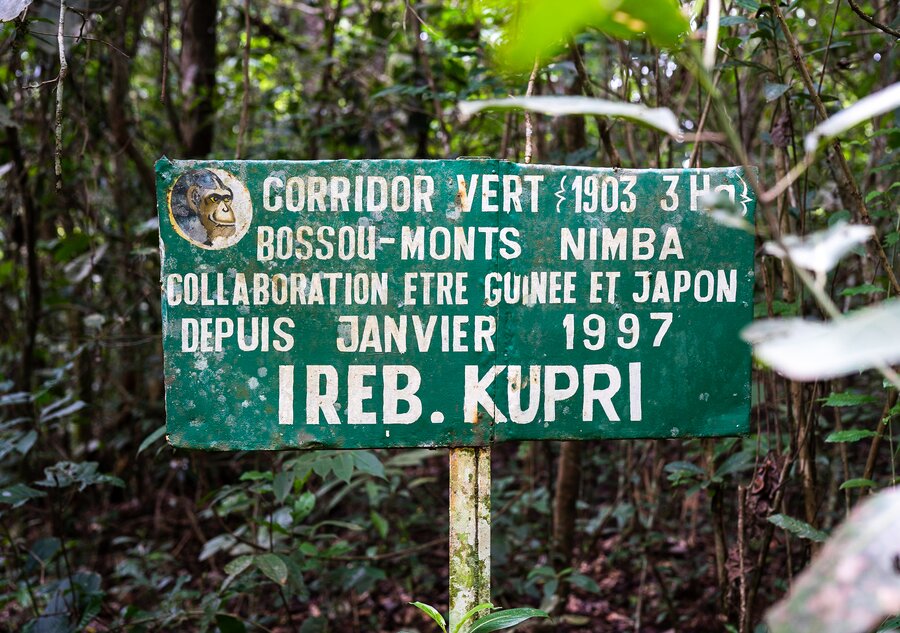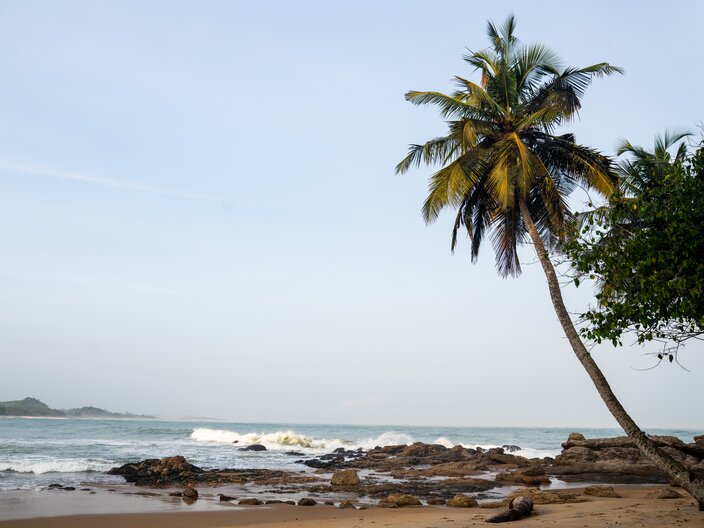In Africa, the general rule of thumb is that when there is no bridge to get over a large river, there is usually a ferry. Typically, these are small boats that transport people and motorbikes. For cars, and especially for those the size of Dötnius, there are very few ferries. So, after crossing the border into Guinea, we decided to follow the tracks of trucks and found a suitable ferry. However, as it was not running that day, due to repairs, we had to wait.
We made friends with the truck drivers who were also waiting. They were transporting coal from the mines to the bigger town, Boké. They immediately expressed their interest in Dötnius and in our journey. As was often the case, it was our vehicle that broke the ice with the locals and allowed us to communicate with them. We spent a companionable evening around the campfire with the transporters and learned a lot about their life and work. Many of them were still very young. Due to their need to provide for their families, it was not possible for them to go to school. It is understandable that food is a greater priority than going to school. However, this also made us a little sad, as their lives will probably always be dependent on daily wages, and their opportunities in life will be limited.
Guinea
Entering Guinea was our first adventurous border crossing. We decided to take a border crossing in the middle of the bush, which was difficult to reach due to the approaching - or already started - rainy season, and so we had to rely on the help of the local population, who showed us a reasonably passable way. When we arrived in Guinea, we immediately had to use a ferry to get across a large river. Guinea started out adventurously for us and was to continue that way.
The country is - probably due to the time of year - very green and mostly untouched. Only a few asphalted roads can be found in the country. The Chinese are currently upgrading the larger roads. Since Guinea is very rich in raw materials - especially bauxite - this is probably the main motivation for foreign investors to build up a functioning infrastructure so that the raw materials can be transported more efficiently.
It is the first country on the western route that has mountains, which made us feel a bit at home. We saw breathtaking waterfalls, huge canyons and enjoyed the curiosity of the local people. The people in Guinea are extremely friendly and let us look deep into their culture through their open manner.
Experiencing the limits
People, meetings and memories
The people of Guinea were always warm, respectful, curious and helpful. Be it at a stop at a river, where we could finally wash after a week without a shower, or during our stay in Conakry, when we were looking for spare parts for Dötnius, the Guineans always wanted to help us, take care of us, take photos with us or simply exchange ideas.
One morning, while in the highlands of Guinea, we had a particularly touching encounter in front of our car. We had spent the night on a hill in the middle of nowhere. As we were having our morning coffee/tea, isolated groups of people passed by on the road. They all stopped and tried to talk to us. As we did not share a common language, hands and feet had to be used to communicate. We eventually found out that the whole village was on its way to a funeral in the next village. None of them had ever seen a "house" such as ours before – not even the local elders. We showed the most curious among them our vehicle and especially our roof tent in which we sleep. There was much laughter and even more cordialities were exchanged. These fun encounters will remain in our memories forever.
Breathtaking landscapes
Guinea mpressed us with its exceptional vegetation. The subtropical country is very green, mountainous and has a lot of cultivated land. It would seem normal that in such an environment there would be little to no issues with hunger. Sadly, that is not the case as the curse of resource exploitation is all too evident here. It is the first country on our route where we were able to witness its effects on the local population. External interest groups enrich a few families, in return for overdeveloping the country’s resources and strip bare the land bare of natural treasures. The population benefits very little and there are country-wide water, sewage or electricity infrastructure to speak of.
Our journey took us to the capital Conakry – where we encountered the first total traffic chaos on our adventure, which allowed us to experience the helpfulness and creativity of the Guineans. On the way west, we visited the Fouta Djallon region with its mountains, waterfalls, canyons, and subtropical rainforests. It was cooler and wetter than before, which suited us just fine.
Conakry - the orderly disorder
The capital Conakry is bursting at the seams with people and activity. Situated on a peninsula, it can only be reached via a single main road. Unfortunately, it had just been under construction without deviation and so we found ourselves in situations where we could neither drive forwards nor backwards. However, once arrived, we enjoyed the city very much as we immersed ourselves in the everyday life of Conakry's inhabitants, knowing full well that we would not be staying there forever. In general, the city – no matter where you are - is very crowded so, we used local moto-taxis to get around. The rides were quite hair-raising and it took a number of practice rides reach our destinations before we arrived no longer sweating . It didn't take long, and soon we felt at ease on the motorbikes.
The Chimpanzees of Bossou and their Green Corridor
In the south-east of the country, we visited the Bossou chimpanzee research centre. The chimpanzees of Bossou gained world fame for their extraordinary abilities to use more than two dozen tools in their daily lives. We were able to hear and learn a lot about chimpanzees, their way of life and the research station on site. The Bossou forests are separated from the larger forests of the Nimba Range by deforestation, which is causing the Bossou chimpanzee group to slowly die out. For years, attempts have been made, by international organizations, to establish a green corridor between the two areas, in recognition of the uniqueness of the Bossou chimpanzees. However, these initiatives have never managed to integrate the local population into their plans. As a result, the green corridor repeatedly falls victim to slash-and-burn operations by local farmers who need the fields for their activities and survival. For some years now, the responsibility has been in the hands of the research centre with a local director. In a few years, great progress has been made and a survival of the chimpanzee group is becoming more and more likely.
This is another example of the unnecessary and ineffective interference of foreign interest groups attempting to resolve African challenges. By not integrating the local population and helping them to realize that these types of projects will actually benefit them, no progress can ever be made.


